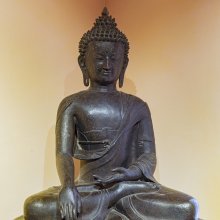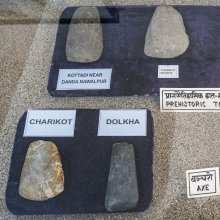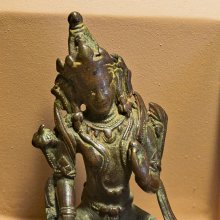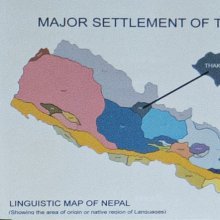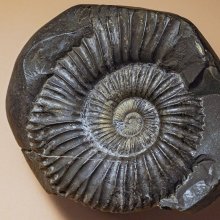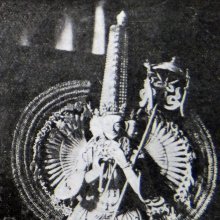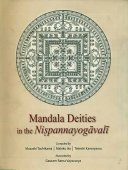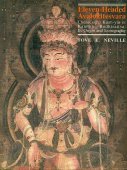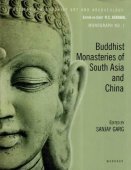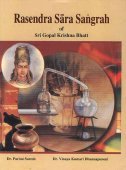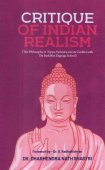Nepal, Nepāl: 2 definitions
Introduction:
Nepal means something in Buddhism, Pali, Hinduism, Sanskrit. If you want to know the exact meaning, history, etymology or English translation of this term then check out the descriptions on this page. Add your comment or reference to a book if you want to contribute to this summary article.
Images (photo gallery)
(+448 more images available)
In Hinduism
Shaiva philosophy
Source: Google Books: The Recognition SutrasThe country of Nepal in ancient times used to a Tantrik kingdom, similair to the Kashmir valley, from which originated many Sanskrit scriptures, such as the 11th century Pratyabhijñāhṛdaya.—In the time of Kṣemarāja, Kashmir was a Tantrik kingdom, which means the rulers were (usually) Tantrik initiates who generously patronized the tradition—and therefore indirectly made possible this book! At that time there were many Tantrik kingdoms in the Asian world, such as those of Bali, Champa (coastal Vietnam), Angkor Wat (in Cambodia), and Tibet, and many more in India, Nepal, and what is now Pakistan. Until just a few years ago Nepal was a Tantrik kingdom, and nearby Bhutan is the last of the Tantrik kingdoms existing today.
-
In Buddhism
Tibetan Buddhism (Vajrayana or tantric Buddhism)
Source: archive.org: The Indian Buddhist IconographyNepal is the name of an ancient country mentioned in the Svayambhūpurāṇa in relation to Svayambhūkṣetra (“place of the Self-Born”).—It is said therein that Mañjuśrī hailed from China, where he was living on mount Pañcaśīrṣa (the Hill of Five Peaks). He was a great saint with many disciples and followers, including Dharmakara, the king of the country. Receiving divine intimation one day that the self-born Lord Ādibuddha, has manifested himself as a flame of fire on a lotus on the waters of Lake Kālīhrada in Nepal, he forthwith set out for that country along with a large number of his disciples, his two wives and king Dharmakara, with the intention of paying homage to the deity. When he came to the lake, however, he found a great expanse of water surrounding the god rendering him quite inaccessible, and it was with immense difficulty that he could approach the flame and offer his obeisance. Having at last succeeded in doing so, however,he cast about in his mind for some means of making the god accessible to all and he began a circuit of the lake. When he reached the southern barrier of hills, he lifted his sword and clove it asunder.
The hill was split into two, and the water rushed through that opening, leaving behind a vast strench of dry land, which is now known as the Nepal Valley. The waters of the Bāghmatī flow down even to this day through that opening, which is still called “Koṭ-bār” or “sword-cut”. Mañjuśrī lost no time in erecting a temple over the flame of fire and on a hillock nearby he made his own abode, and also a vihāra (or monastery) still known as the Mañjupattana, for his disciples. Lastly, he made Dharmakara the King of Nepal.

Tibetan Buddhism includes schools such as Nyingma, Kadampa, Kagyu and Gelug. Their primary canon of literature is divided in two broad categories: The Kangyur, which consists of Buddha’s words, and the Tengyur, which includes commentaries from various sources. Esotericism and tantra techniques (vajrayāna) are collected indepently.
See also (Relevant definitions)
Starts with (+43): Buddhism in nepal, Nepal aconite, Nepal aconite root, Nepal alder, Nepal bladder senna, Nepal camphor, Nepal cardamom, Nepal dhaniya, Nepal geranium, Nepal gongronema, Nepal privet, Nepal rudraksha, Nepal trumpet flower, Nepala, Nepala-vithalu, Nepala-vittulu, Nepalabda, Nepalaberu, Nepalabevu, Nepalada.
Ends with: Bish poison of nepal, Buddhism in nepal.
Full-text (+2217): Nepala, Manjugarta, Naipalika, Aramudi, Nagavasa, Naipala, Nepali, Kutapasaptaka, Newa, Tathagataguhyaka, Trinanimba, Vatsadevi, Somakhaddaka, Divyavadana, Kathmandu, Riddhilakshmi, Niyamapala, Ashvamedha, Aishvarika, Pancaraksha.
Relevant text
Search found 103 books and stories containing Nepal, Nepāl; (plurals include: Nepals, Nepāls). You can also click to the full overview containing English textual excerpts. Below are direct links for the most relevant articles:
Varahi Tantra (English Study) (by Roberta Pamio)
Blue Annals (deb-ther sngon-po) (by George N. Roerich)
Chapter 24 - The rwa tradition < [Book 10 - The Kālacakra]
Chapter 6 - Six texts of Adamantine Sow (Vajravārahī) < [Book 7 - The preaching of the Tantras]
Chapter 8 - The introduction of the teaching by the religious king < [Book 1 - The beginning of the story of the Doctrine]
Lalitopakhyana (Lalita Mahatmya) (by G.V. Tagare)
Vastu-shastra (5): Temple Architecture (by D. N. Shukla)
Temple architecture in Nepal < [Chapter 12 - History of Hindu Temples (Prāsādas and Vimānas)]
Guhādharas (Buddhist rock-cut architecture) < [Chapter 12 - History of Hindu Temples (Prāsādas and Vimānas)]
Stūpas (Shrines for Devotion) < [Chapter 12 - History of Hindu Temples (Prāsādas and Vimānas)]
International Affairs: A Survey < [January 1971]
Swami Vivekananda Among a Galaxy of Great < [July – September, 2006]
Malgonkar's “The Devil’s Wind” (The first great Indo-Anglian Historical < [July – September, 1979]
The Indian Buddhist Iconography (by Benoytosh Bhattachacharyya)
Related products
(+1 more products available)
